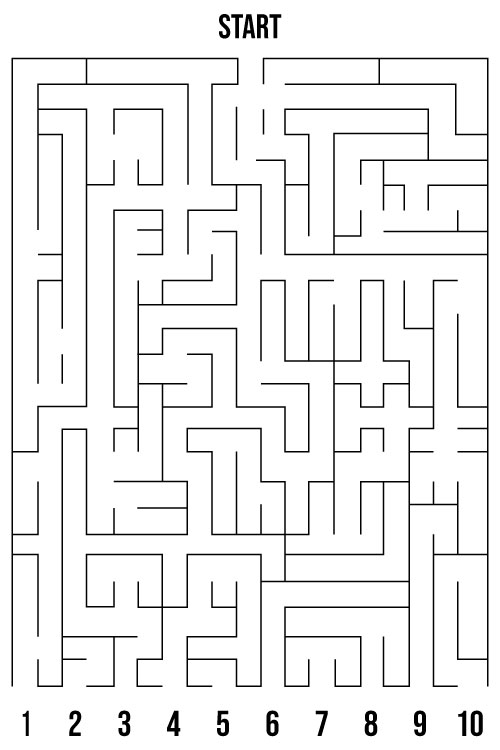What makes a great escape room? Is it the cleverness of the puzzles? The intricacy of the locks? Or is it something more? For writer and designer Dan Wilson, the secret isn’t just in the challenge, but in the story. With a background that spans from writing for the screen to performing as a close-up magician, Dan brings a unique perspective to building immersive experiences. He understands that a truly memorable escape room is about creating a world, fostering teamwork, and ensuring every single person, from the puzzle master to the quiet observer, has their moment to shine.
I recently had the chance to sit down with Dan and dive into his process. What I discovered was a masterclass in designing for fun, collaboration, and pure, unadulterated joy.
Listen In
My full interview with Dan is available to listen to below. One thing that really comes through in the audio is Dan’s love for puzzle design, world building, and creating experiences that bring people together. If you have an hour, it’s worth a listen.
An Unlikely Beginning
“You’re good with puzzles. Have you ever designed an escape room?”
Like many great adventures, Dan’s journey into the world of escape rooms started with a simple phone call. At the time, he was living in Los Angeles, building a career in writing. A college friend who had moved back to Cincinnati reached out with an unusual request: “You’re good with puzzles. Have you ever designed an escape room?”
Dan hadn’t, but the idea intrigued him. He designed his first room remotely, drawing on his natural storytelling instincts. His friend loved it so much that he made Dan an offer he couldn’t refuse: pack your bags, move to Cincinnati, and help me build an entire escape room business. After 26 years in L.A., Dan took the leap, trading the world of screenwriting for one filled with physical puzzles, hidden clues, and real-life adventures.
He quickly found that his skills as a writer and a former magician were perfectly suited for the job. “I realized that there’s such a story element to escape rooms,” Dan explained. “And that’s what makes it really fun.”
Everyone Deserves To Have Fun
Dan’s first big lesson came not from a success, but from a design challenge. He created an elaborate puzzle involving dozens of blocks representing the periodic table. While the puzzle itself was clever, he quickly learned about a crucial element of room design: reset time. “The reset time was ridiculous,” he laughed, remembering the pain of putting every single block back in its place between games.
This experience, however, led to a profound insight. While the puzzle was a challenge for adults, it was perfect for younger players. Why? Because it gave them a clear, tangible task. Once the team figured out they needed to see the back of the blocks, the kids could jump into action. “You can task them,” Dan said. “They don’t feel like they’re just standing around.” The kids could be the heroes who took all the blocks down, contributing to the team’s success in a meaningful way.
This philosophy of ensuring everyone has a role to play is a cornerstone of Dan’s design. He believes that the best rooms force people to work together. He shared an example of a puzzle with a long hallway of coat hooks that needed to be flipped up or down in a specific sequence. It was impossible for one person to do it alone while reading the clue. You needed a team, with each person taking a section, calling out positions, and working in unison. It’s a brilliant way to turn a simple mechanic into a powerful team-building exercise.
“I love running around places like Home Depot, Michaels, or IKEA, just looking for something weird.”
Dan finds inspiration for these collaborative puzzles in the most unexpected places. “I love running around places like Home Depot, Michaels, or IKEA, just looking for something weird,” he explained. “And I think, can I make a puzzle out of this?” By seeing the potential for adventure in everyday objects, he crafts experiences that feel both surprising and wonderfully intuitive.
The Psychology of the Puzzle
Beyond just making sure everyone has a task, Dan focuses on the emotional journey of the players. He wants to make them feel smart, accomplished, and, most importantly, victorious. One of his favorite techniques is to design a puzzle that looks incredibly daunting but has a surprisingly simple solution. “It makes you feel like, ‘Wow, I just solved that in a matter of seconds!’” he said. This creates a huge dopamine hit for the players and builds their confidence.
A-Maze-ing Puzzles
If you want to see one of Dan’s puzzle ideas in action, click the button below. Dan had me do this puzzle live in the interview so I wanted to recreate this for all of you to experience too. You have 10 seconds to scan the maze and find your way from the top entrance of the maze to the exit at the bottom. You’ll enter a number in after the timer runs out.
He also believes in moving beyond a simple win or lose outcome. In his kids’ rooms, for example, teams could win a gold, silver, or bronze medal based on their performance. This way, even if they didn’t escape the room in time, they still left with a sense of achievement.
“I didn’t think I’d be using that!”
This positive reinforcement is key. Dan often builds a “moment of glory” into his rooms, especially for those who might not be the main puzzle-solvers. He told a story about a father who brought his kids to a room and mostly just watched. But the final puzzle involved Morse code. The dad, a Navy veteran, immediately knew what to do. “I didn’t think I’d be using that!” he exclaimed, beaming. He had his moment, and it made the entire experience unforgettable for him and his family.
Dan even finds ways to turn a “loss” into a win. He described a scenario where, if a team is running out of time, he might trigger the final door to pop open anyway. They didn’t solve everything, but they still get that exciting, kinetic rush at the end. It’s about crafting a positive narrative, no matter the outcome.
Building a Believable World
For an escape room to be truly immersive, the world has to feel real and the rules have to be fair. Dan’s number one rule for this is that players should never need outside knowledge. If there’s a puzzle involving Morse code, the key to deciphering it must be somewhere in the room.
He gave a perfect example of a room with a baseball-themed puzzle. The clues to the solution were hidden in a poem about team mascots. For a baseball fan, it was a fun challenge. But what about someone who doesn’t know the difference between a Cardinal and a Marlin? To make it fair, Dan also placed a chart on the wall showing the team rankings, which secretly provided the same information. This way, everyone had a path to the solution, and nobody was punished for not being a sports expert.
Of course, building a believable world also means anticipating how players will try to break it. “As dumb as you think somebody is, they’re dumber,” Dan joked. He shared a hilarious story about a brand-new prison break room where a player used a pocket knife to completely unscrew the sink from the wall, thinking it was part of the game. It’s a reminder that designers have to player-proof everything.
Even the hint system is part of the immersive experience. Dan believes hints should never be the answer; they should lead players to the answer. Instead of saying, “Use the magnet to get the key out of the drain,” a game master should ask, “Did you check the broom?” This allows the players to make the final connection themselves, keeping their sense of agency and accomplishment intact.
Realism Leads to Immersion
When it comes to making a room feel real, Dan pulls out all the stops. In the prison break room he mentioned earlier, players discover a broom handle with a magnet to fish a key out of a drain. Another room featured a diner inspired by Skyline Chili that somehow managed to turn an ordinary space into a full-on puzzle adventure. In one of his favorite moments, he and his team snuck in Polaroid photos of players mid-game and hid them in props, making it seem like someone had been watching them the whole time. The surprise on their faces when they found their own picture in the game? Priceless.
Dan’s approach to immersive experiences also draws from his screenwriting and game design background. He’s big on giving players early information that pays off later, like a book with odd symbols or a painting that only makes sense after you unlock the final room. He compares it to Indiana Jones and the Map Room. Everything’s in front of you, but you don’t know how it fits together until that last puzzle clicks into place. There’s satisfaction, excitement, and a real sense of accomplishment when you get to that point in the experience.
It’s clear that for Dan Wilson, an escape room is a story waiting to be told. By focusing on collaboration, player psychology, and pure, unadulterated fun, he’s not just building rooms, he’s building memories. And maybe that’s the real magic.
To learn more about Dan Wilson’s work, you can connect with him on LinkedIn. And if you’d like to hire him to help build your next great adventure, you can check out his profile on Upwork.

